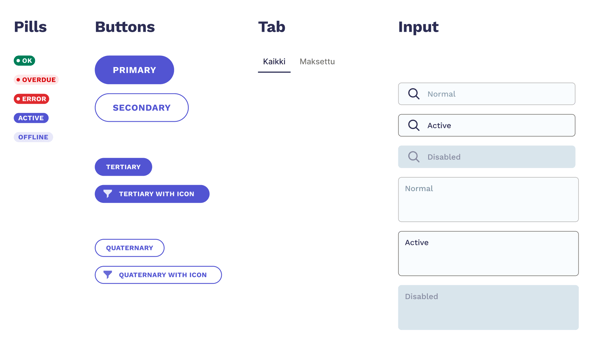Have you ever wondered how a DevOps Engineer or a Cloud Engineer can contribute to your project and elevate your software processes? Our handy little guide will help you to understand the ins and outs of both roles, how they intersect, and at what they excel.
The evolving IT landscape: from silos to collaboration
The IT landscape continues to evolve every day at a rapid speed, with different technologies and methodologies showing up on the market constantly. The late 2010s and early 2020s were marked by the rise and growth of cloud computing technologies, with the sector's valuation exceeding 500 billion in 2023 according to Precedence Research. Specialists, who are focused on building on the cloud are usually called Cloud Engineers, Cloud Architects, or Solutions Architects.
Simultaneously, the DevOps philosophy has solidified its position as a cornerstone in numerous IT projects and organizations since its inception in 2009. DevOps has fundamentally altered our perception of the software development process. The old way was the way of the silos: the developers (Dev) would develop the application, and once the application was in a releasable state, they would hand it over to the operations teams (Ops).
DevOps approach fosters collaboration between development and operations teams right from the beginning of the development lifecycle. This collaborative effort entails the continuous release of software in incremental stages, leveraging automation to streamline repetitive tasks and enhance velocity. The term DevOps encompasses both philosophy (why) and practice (how). A person, who is a consulting expert on the DevOps methodology usually has the title of DevOps Engineer, DevOps Consultant, or DevOps Specialist.
With the Cloud growing and DevOps having a firm footing in many software teams, it is no wonder that the positions of DevOps Engineer and Cloud Engineer have started to collaborate or sometimes even completely interfuse, and a person with any of those titles does the responsibilities of both roles to a varying degree in their day to day job.
Understanding DevOps and Cloud Engineer responsibilities
DevOps
DevOps engineer is primarily responsible for examining and refining software practices, in order to ensure a seamless release process. According to DevOps principles, workloads should be automated and involve as little human input as possible to make release processes easier, minimize operational overhead, mitigate the risk for accidental errors, and accelerate release velocity. A DevOps engineer can assist in evaluating release strategies to minimize disruptions to the end users during updates. DevOps Engineers use a variety of tools in order to support their work. Sometimes, a simple bash script could already remediate some of the pain points developers experience in their everyday job. In other cases, a more heavy-duty stack is needed – for example, GitHub actions, Ansible, Chef or, Puppet. At the end of the day, DevOps Engineer is focused on bridging the gap between development and operations and tooling is just one part of the job.
Cloud Engineer
Cloud Engineer or Cloud Architect focuses more on setting up a Cloud environment tailored to the application needs. They are familiar with the intricacies of various Cloud Services and are able to make crucial architectural decisions when it comes to how to run the application in the Cloud. A Cloud Architect is also able to optimize the cloud setup, based on the application and business requirements. Cloud platforms are very flexible and offer a slew of services with varying degrees of management complexity, from fully managed serverless services to traditional virtual machines. A Cloud Engineer is able to evaluate the specific requirements and select the best option possible within a given budget while taking into account other considerations like privacy, compliance, vendor lock-in, and software maturity.
To put this in more concrete terms, here is a list of example tasks that each specialist might be responsible for in a typical greenfield software project:
|
DevOps Engineer |
Cloud Engineer |
|
Creates a handbook of software development practices |
Evaluates the application and business requirements in the context of Cloud adoption |
|
Sets up CI/CD pipelines |
Plans and creates the Cloud architecture |
|
Debugs CI/CD issues |
Debugs resource issues in the Cloud |
|
Coaches developers on DevOps and SRE practices |
Onboards developers to the Cloud platform |
|
Plans alerting and observability policies |
Implements alerting and observability |
|
Evaluates security practices |
Implements security practices in the resources’ configuration |
Adopting Cloud and DevOps – achieving efficiency and agility
Keep in mind that adopting the cloud doesn’t automatically mean that your project embraces DevOps practices. It is possible to “do waterfall” or be siloed even when your architecture is fully composed of state-of-the-art technologies running in the public cloud. Similarly, you can fully adopt a DevOps mindset and be entirely agile while still having your software running smoothly in an on-premises environment.
The good news is – cloud engineering and DevOps synergize really well, supported by the vast array of managed services offered by public cloud providers! This way, you can make the most out of both and give your software development an extra boost, while having a reliable and scalable architecture that fits your budget.
Cloud tools can help you build a software release process that is both low-cost and developer-friendly, encouraging productivity and bringing your releases live faster. Of course, the process depends on your organization's needs, size, maturity, scale, end-customers, and the software itself.
For example, you could build a managed low-cost cloud solution for a simple serverless workload in Google Cloud, while staying compliant with DevOps best practices. You could use Cloud Build to build your containerized application in an automated manner, Artifact Registry to store the container image and audit its security, and finally, Cloud Run to serve your container to the users. Thanks to the services integrating seamlessly with each other, there is very little you need to do in terms of orchestrating the entire workflow. Google Cloud leverages Service Accounts (non-human IAM entities) for authentication between services, so in terms of security, this eliminates the need for managing SSH or other application keys, which is often a tricky part in on-premise workloads.
Where to start?
Adopting DevOps in your cloud workloads might seem like a daunting task at first, but you can always start small before you go all the way. It is a very DevOps way of doing things – start with small increments, test, experiment, and adjust.
If you already have CI/CD pipelines running in Jenkins, you could assess if maybe a managed CI/CD tool like GCP’s Cloud Build would be a better fit for your team’s needs. Maybe you have some manual practices related to provisioning (Cloud or other) resources that could be replaced by a Terraform configuration for better reliability and repeatability. Perhaps you have some workloads running on virtual machines that could be migrated to a managed solution to minimize the operational overhead.
At Fraktio, we do both DevOps and Cloud Engineering. We love the public cloud, with a special focus on the Big 3 (AWS, Azure, and GCP), and understand the importance of DevOps in a well-functioning team.
Our Cloud-certified specialists can help your organization from start to finish – plan and build the architecture, pilot a small release, build CI/CD processes, coach the developer team on best DevOps practices and finally release your amazing product to the world and keep it healthy.
Be it a greenfield project or a migration of an old legacy monolith, we can help you in choosing the right solution just for your software to fit your unique needs and requirements.





